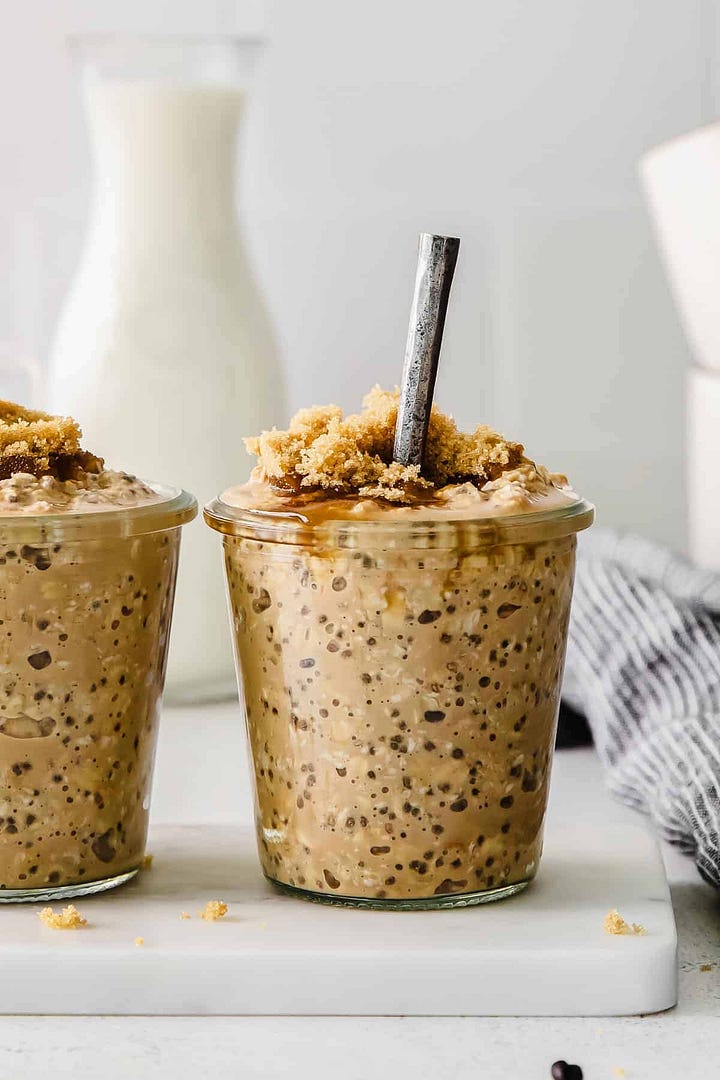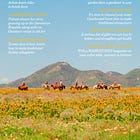#096 What's your favorite water?
Ultimate Water Tier List
Not all water tastes the same. And real water drinkers instinctively know this. The vessel you drink from matters as much as the minerals and the presence / lack of toxins.
Whether its from a natural spring or from an underground well, water is a carrier for minerals and it’s always been this way. We’ve always consumed mineral-rich water.
Distilled water is a new phenomenon that only exists because we wanted to turn toxin-laden water into drinking water. And don’t get me wrong. While that’s great news, we have to acknowledge that the distillation process strips water of the naturally occurring minerals that our bodies crave for.
This is why we have to ask ourselves two important questions when choosing the best water to drink:
What is its mineral composition?
Are there any toxins present? If so, what?
The S-tier bottles in our tier list are waters of some of the best mineral compositions, and they come in beautiful glass bottles that’s increasingly rare these days. This tier list obviously isn’t gospel, it’s just what I’ve found works best for me. If you think there are any major errors or huge notable omissions, leave it in the comments for the people :)
I wouldn’t say there’s ONE best brand of water, each one is unique to its source and it would be great to cycle between various brands of mineral waters to tap on their mineral-rich qualities. For example,
Fiji for it’s silica-rich content that can aid the body in removing aluminum
Evian, Vittel, Perrier, San Pellegrino for the bicarbonate
Gerolsteiner, Vichy Catalan for the trace minerals
This is an approximation of the mineral levels (mg/l) of some of the more popular water brands on the market. Note: It might not be the most accurate and is based on publicly available information.
P.S I have to say, that 750ml glass Evian bottle is the best glass bottle design ever. That shape is so iconic they even released limited edition versions every now and then. Who knows? Perhaps we could drop a WARKITCHEN x EVIAN collab in the future 💧
We need more companies to revert to glass!
ON PFAS & MICROPLASTICS
I’m the first to say that plastic exposure is bad for us and that we should do all that we can to minimize contact. Here at the WARKITCHEN, we are vehemently against plastic, PFAs, microplastic, BPA, BPS, nanoplastic and all of its cousins and relatives.
The science is clear. Ingesting too many of these endocrine-disrupting particles will undoubtedly mess with optimal hormonal function. That being said, there is a point where all this gets too neurotic.
The reason why several NATURAL spring waters have been found to contain PFAs is because… these particles are everywhere. I’m sorry to be the bearer of bad news, but there is a tiny concentration of these things that are literally everywhere. We can’t avoid it.
This is not to say you shouldn’t care about plastic at all and start megadosing BPA, but with things like spring water, I’m of the belief that the benefits outweigh the negatives. These particles are found in minute concentrations.
Pick your battles with plastic. Do what you can in your life to systematically reduce your exposure as much as possible, and then stop worrying about the rest. Don’t use non-stick pans. Avoid plastic water kettles. Throw out the cling-wrap. Don’t microwave food in plastic. Remember that placebo is a very real thing, and constantly worrying about PFAs in everything will ironically damage your health even more.
That being said, avoid plastic water bottles as much as you can. They’re often stored in warehouses that are extremely warm, and this means the plastic on the bottle itself gets leached into the water.
Though, if I had to choose ONE plastic bottle water to drink? It would be Evian. It’s one of the few that doesn’t give me that strong plastic-y taste that the likes of a Dasani has.
ON ALKALINE WATER
Alkaline water is a scam. Your stomach neutralizes the pH of the liquids you’re consuming the moment it reaches it. The pH level of the water you consume is not something worth paying attention to. You’re better off looking at the mineral content and to identify if there are any toxins present.
ON FLUORIDE
There is a difference between the fluoride you find in spring water versus the fluoride you find in municipal drinking water. One is naturally occurring (calcium fluoride) and has been a part of spring water for millennia, whereas the other (sodium fluoride) is artificially laced. The former is more stable compared to the latter which basically turns into free fluoride ions in the water.
Since we’re on the topic of fluoride, let me give you some brief background information. Have you ever wondered… Why is fluoride even in our water? Why is it hotly debated? Why do people get so passionate and angry when you mention fluoride?
The reason why fluoride is added to toothpaste and so much of drinking water in the world is simple — it was found to aid in preventing the formation of cavities. And this is true. Fluoride ions basically strengthen the enamel in our teeth and makes it more resistant to breaking down. This is why we see fluoride everywhere… BUT, one thing we failed to properly check for is the side effects that have been associated with increase fluoride consumption, which range everything from:
THIS is why there’s a huge movement against the de-fluoridation of municipal tap water. The acclaimed positive impacts of topical fluoride on teeth can be achieved by simply practicing proper dental hygiene. There are also new-age natural tooth powders like what VanMan makes, that aid in remineralizing your teeth without any fluoride whatsoever.
ON GETTING MINERALS FROM FOOD INSTEAD
Yes, there’s absolutely no question that you CAN get essential electrolytes and minerals from food sources. You don’t have to get it from water. BUT, you still don’t want to consume 100% distilled water. Especially in moments of time where you’re thirsty and in absolute need of hydration. Flushing your body with 100% distilled water will only dilute the electrolytes you already have present in your body, and is why some people find themselves forever thirsty even though they’re flushing themselves with water.
ON KANGEN
The only reason why I placed Kangen water so low is because I feel it’s entirely overrated. The whole MLM nature of how it’s sold certainly doesn’t help either. However, I’ve had a few people reach out to me claiming how Kangen has saved their lives and been so beneficial for them and their family and in those cases I’ll say, keep doing it! If you find something that works for you, that’s amazing. However, make sure to pair it with a good water source. Kangen is an ionizer, not a source of water itself.
And of course note that water isn’t the only thing you can drink for hydration. Here are some of my favorite hydration drinks:
Oyster shells are a work of Art
Why are oyster shells so beautiful? They’re a masterpiece.
Coffee makes you feel Kingly
Coffee is magical. Every sip opens a portal of new ideas.
“Running on a raw cappuccino and pure vibes sir”
It’s true, isn’t it?
Welcome to another beautiful weekend, beautiful people 🌻
Madeleines are one of the moat legendary cakes in the world. Originating in the 18th century France, these scallop shell shaped small sponge cakes are the perfect fall treat. Marcel Proust famously wrote about them,
No sooner had the warm liquid mixed with the crumbs touched my palate than a shudder ran through me and I stopped, intent upon the extraordinary thing that was happening to me. An exquisite pleasure had invaded my senses, something isolated, detached, with no suggestion of its origin. And at once the vicissitudes of life had become indifferent to me, its disasters innocuous, its brevity illusory – this new sensation having had on me the effect which love has of filling me with a precious essence; or rather this essence was not in me it was me. ... Whence did it come? What did it mean? How could I seize and apprehend it? ... And suddenly the memory revealed itself. The taste was that of the little piece of madeleine which on Sunday mornings at Combray (because on those mornings I did not go out before mass), when I went to say good morning to her in her bedroom, my aunt Léonie used to give me, dipping it first in her own cup of tea or tisane. The sight of the little madeleine had recalled nothing to my mind before I tasted it. And all from my cup of tea.
— Marcel Proust, In Search of Lost Time
Though, with this recipe I would highly recommend AGAINST using a canola oil spray, and to instead lubricate your madeleine pan with a bit of raw butter. You’ll also be better off looking for a cast iron / stainless mold, instead of a non-stick or aluminum one.
You know how much I love a good basque cheesecake. This recipe takes it to a whole new level with a burnt, crème brûlée esque crust.
LISA’S RECIPE TIPS:
Use room temperature ingredients: This will help make it easier to make a smooth batter.
Strain before baking: Straining the batter will gurantee the smoothest textured cheesecake.
Baking temperature and time: Every oven is different. Even between my two ovens the baking time differs. When making it to brûlée, I err on the slightly more baked side (but it should still jiggle) because its easier to brûlée and the cheesecake wont melt as quickly from the torching.
Brulee: I’ve found that level-ing the cheesecake makes it easier to torch since the sugar doesn’t just slide off. I used to dip the cheesecake in sugar and torch, but with such a thin layer it didn’t seem to harden and melted the cheesecake more than I could torch. Add more sugar as desired, the more you add the thicker and harder the crunch.
Timing: I recommend brûléeing right before or an hour before serving depending on if you want the cheesecake served semi-warm or completely cool. If you prefer to serve it cool, place it back into the fridge after brûléeing for about an hour.
The main difference that gives it that shiny caramelized crust is dipping the cheesecake into a layer of sugar and using a torch to caramelize it. This could be something you do right infront of a house guest as well, or if you own a restaurant this is something you could charge an additional $49.79 for!
❋ BROWN SUGAR SHAKEN ESPRESSO OVERNIGHT OATS


This overnight oats recipe combines the flavors of brown sugar and espresso to give you one delicious breakfast that’s packed with whole grains and also gives you a nice wake-up call from a shot of espresso!
If you’ve been following us for a while now, you know our stance when it comes to plant foods. They’re absolutely OKAY for us to consume! They just need to be prepared properly.
This espresso oats recipe written by Lee Funke is incredible, and would definitely make for a nourishing breakfast choice, but I would just make a few important changes:
Almond milk → Real milk
Soak oats & chia seeds separately and drain that water before commencing this recipe
If you want to understand exactly why oats should be prepared this way, check this out:
❋ Read our latest WARKITCHEN magazines:
❋ Our latest print issue is live. This summer fall print measures 8.5" by 11", featuring a matte-laminated cover adorned with silver-foil stamping and linen embossing. The magazine comprises 193 pages of full color, printed on 120gsm art coated paper finished in perfect binding. With a WARKITCHEN on your coffee table, summer will never end 🌞
❋ Get your copy of Optimal Fuel: Your Nutrition Playbook here. It's a cookbook and nutrition guide — all in one. All proceeds goes towards an outrageous amount of hearty ribeyes and raw honey!
❋ If you’d like to contribute an article or sponsor a future issue, please send us your pitch to rocky@warkitchen.net.
❋ We release a digital magazine issue on the first Sunday of every month. Explore the full magazine archive here.
❋ Adding us (rocky@warkitchen.net) to your contacts, or moving us to primary will make sure you continue receiving these emails. Connect with us on all our socials.
Till next time,
Godspeed!





















I like the small bubbles in Pelegríno. Since I quit alcohol, it’s my go-to cocktail.
I’m fortunate enough to live in Maine, where there’s lots and lots of water. There’s a spring not far where I fill up my five-gallon carboys. They’re plastic, alas, but the water comes out of the spring cold and I store it in my garage. I believe most of the leaching happens with heat.
Findaspring.org is a good resource.
I drink water from my filter on my fridge. I can't afford fancy water in glass bottles all the time. Maybe once in awhile.